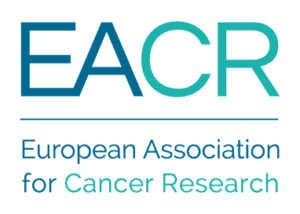An ongoing story of a blooming research field
It is well known nowadays that cancer progression requires metabolic rewiring [1]. Cancer cells exploit a variety of nutritional strategies, and reprogrammed energy metabolism is now acknowledged as a hallmark of cancer [2]. If we take a moment to look back at the past, we realise that the field lightened up using a grain of sugar.
The discovery that cancer cells use aerobic glycolysis to meet their metabolic needs laid the foundation for cancer metabolism as a research discipline. Although Otto Heinrich Warburg made this discovery nearly a century ago, the field of cancer metabolism blossomed only in the past couple of decades. The development of PET scans, now routinely used in cancer diagnosis relies on this discovery. Similarly, the development of the first few drugs targeting the glycolytic pathway held high hopes for the treatment of cancer, but the clinical testing of those drugs revealed severe side effects. However, a better understanding of the metabolic rewiring in cancer cells and the effects this has not only on the cancer cells but on the entire tumour ecosystem holds the promise to improve the development and discovery of new drugs targeting metabolic pathways on one hand and to improve traditional cancer therapies by circumventing therapy resistance on the other hand.
Reprogrammed Energy Metabolism as a hallmark of cancer
The first observation in this sense was made by Otto Warburg in 1926, who noticed that cancer cells perform glycolysis even in the presence of oxygen [3]. Influenced by Pasteur’s theory that the presence of oxygen should suppress glycolysis, Warburg concluded that the molecular machinery responsible for oxidative phosphorylation must be defective in cancer cells. He even went a step forward claiming that defects in cell respiration must be the root cause of cancer [4, 5]. These theories were considered controversial even at the time. Through his research, his contemporary, Sidney Weinhouse, showed that oxidative phosphorylation takes place at similar rates in malignant and non-malignant cells, suggesting mitochondria from cancer cells are intact [5, 6].Nowadays, we acknowledge the complexity of this phenomenon. Whilst numerous non-mitochondrial causes have been described for aerobic glycolysis in cancer cells, we also need to acknowledge that the mitochondrial DNA is one of the most mutated regions in many tumour types. Even though the role of those mutations is still to be fully elucidated, more recent research builds a case for those mutations bearing a role in cancer development and progression. A large part of the current evidence relies on clinical genomic data, so rigorous experimental approaches are needed in the future to elucidate the role of mitochondrial mutations in cancer progression [7].
The changes in the cancer cell metabolism arise in response to the ever-changing energetic and nutrient demands of the tumour. Tumours, however, are not stand-alone entities, so their metabolism is intrinsically wired to the host metabolism. On the one hand, this means that host physiology and lifestyle metabolic alterations, such as obesity, for instance, can profoundly influence the biology of cancer [1, 8]. On the other hand, cancer can drive a rebalancing of the host metabolism towards catabolism to sustain the increased energy needs of ever-expanding (anabolic) tumours and promote the production of building blocks for new tumour cells. Such adjustments of host metabolism in response to cancer progression can have detrimental, sometimes life-threatening, effects on the host, such as cachexia [1].
Generally, these metabolic changes are not encoded in the tumour genome. Metabolic enzymes are rarely mutated in cancer, suggesting that metabolism needs to retain a certain degree of flexibility in cancer. However, there are a few examples of germline mutations in the Krebs Cycle enzymes that predispose to cancer. Hereditary cancer syndromes, defined as a predisposition to a subset of tumours, including renal cell carcinoma and paragangliomas, among others, are associated with heterozygous germline mutations in genes encoding succinate dehydrogenase and fumarate hydratase [1]. Although not common, there are also some examples of neomorphic mutations in metabolic enzymes that provide them with novel biochemical functions. An example in this sense are somatic mutations to genes encoding isocitrate dehydrogenase 1/2 found especially in acute myeloid leukemia (AML), chondrosarcoma, cholangiocarcinoma and glioma [1],

Cancer metabolism: A blooming research field
Although Warburg’s main interest was in cancer research, research performed by him and his lab enriched the knowledge regarding cell respiration and photosynthesis. Warburg showed through his early research in sea urchins that increased energy demands required for cell proliferation are met by increasing cell respiration. He attributed cell respiration to the mitochondria, which he called ‘grana’. Through his extensive studies of cell respiration, Warburg noticed the role of iron in catalytic activation and discovered cytochrome c, a discovery for which he was awarded the Nobel prize in 1931 [9]. Work from his lab helped elucidate the role of many proteins involved in cell respiration.
Discoveries made by many other biochemists from that period and in years to come added to Warburg’s work contributing to the development of the cell metabolism field. Embden, Meyerhof and Parnas made seminal contributions to understanding glycolysis, Krebs described the tricarboxylic acid cycle and urea cycle, Cori and Cori described glycogen metabolism, Mitchell focused on oxidative phosphorylation, Lipmann emphasised the role of ATP in energy-transfer reactions, Eagle lay the basis for in vitro mammalian cell cultures and identified their nutritional needs. This is just to name a few of the pioneers of this research field [1, 10].
Along with the discovery of oncogenes and tumour suppressor genes, the cancer research field shifted focus towards molecular biology and genetics and it wasn’t until a connection was noticed between oncogenes and metabolic processes that scientists started looking once again into the metabolic particularities of cancer cells. More recent work focused on understanding and depicting the basic regulation of core metabolic pathways. Current understanding of cancer cell metabolism appreciates that there is an interconnection between genes and metabolism: whilst some metabolic changes may be induced by gene mutations or changes in gene expression, metabolite abundance and distribution can also affect gene expression [10, 11], influence mutational rate and mutation bias [12].
After two decades of investigating the changes in cancer cell metabolism, we now understand that most often cancer cells don’t use glycolysis instead of oxidative phosphorylation. In fact, cancer cells most often possess fully functional mitochondria and apart from malignant cells that grow in hypoxic conditions, they use both oxidative phosphorylation and aerobic glycolysis to support their increased energetic needs and rapid proliferation [5, 11]. The inclination towards glucose oxidation varies from tumour to tumour, depending on the tissue of origin. Heterogeneity in terms of the preferred type of cell respiration occurs within a tumour as well, mostly based on the availability of oxygen [1, 5]. The dependence of cancer cells on aerobic glycolysis is not fully understood, but it is believed to support increased proliferation by supporting anabolism and providing cancer cells with a carbon source for the increased synthesis of nucleotides, fatty acids and amino acids.
By using aerobic glycolysis, cancer cells also reduce oxidative stress by reducing the production of mitochondrial reactive oxygen species. There is also support for antioxidant pathways by generating NADPH in the pentose phosphate pathway or through serine synthesis [13], for example. Reducing oxidative stress protects cells from anoikis, increasing their invasiveness [14] and safeguarding them from some form of anti-cancer therapies such as radiotherapy [15].
Another consequence of aerobic glycolysis is the production and excretion of lactate in the tumour microenvironment, leading to its acidification. Changes to the metabolic characteristics of the tumour microenvironment have profound effects on tumour progression. Lactate is involved in promoting angiogenesis, cell migration, metastasis and immune escape. Through promoting an immunosuppressive phenotype, aerobic glycolysis can negatively impact tumour response to immune-, chemo- and radiation therapy [11, 16]. However, in addition to the reported acidification, lactate excretion in the tumour microenvironment can represent a strategy of intercellular carbon exchange. There’s evidence that tumour-associated fibroblasts can also increase glycolysis, further increasing lactate concentration in the tumour microenvironment [11]. Tumour cells can also incorporate lactate and use it as an energy source by oxidizing it in the TCA cycle [17, 18]. Therefore, the increased lactate concentration in the tumour microenvironment may support cancer cells’ metabolic needs through a lactate shuttle, promoting a self-suficient metabolism [11, 16].
Metabolic changes in cancer cells go well beyond glucose metabolism. Other common metabolic characteristics of cancer cells are the anaplerotic use of glutamine, increased fatty acid synthesis or oxidation. Changes to these core pathways, similar to those for glucose metabolism confer cells the ability to maintain their increased bioenergetic and biosynthetic needs, and provides metabolic products that counteract stresses such as reactive oxygen species production [10].
Targeting glycolysis: a tempting, but challenging treatment approach
The reliance of cancer cells on the changes to their glucose metabolism together with the fact that this is a shared characteristic of cancer cells common to many cancer types, makes targeting the Warburg effect in cancer a tempting therapeutic approach. Several pharmaceutic compounds have been developed against various components of the glycolytic pathway, including small molecules targeting glucose transporters whose expression is elevated in cancer cells, inhibitors for hexokinase, GAPDH, phosphofructokinase, phosphoglycerate mutase, monocarboxylate transporters and lactate dehydrogenase. More than 100 different compounds have been described as novel inhibitors of the glycolytic pathway [11]. An additional therapeutic approach is targeting the lactate shuttle.
However, given the importance of this pathway for the survival of most tissues and cells in the body, translation to the clinic of any of those compounds was impaired by severe side effects. Moreover, as with most critical pathways, there’s an increased redundancy of enzymes and transporters involved in glycolysis and multiple redundant mechanisms are at play, so tumours are likely to develop resistance to therapy. Metabolic heterogeneity and temporal dynamics in metabolic preferences add an extra layer of complexity when it comes to targeting the glycolytic pathway [11].
Specifically targeting tumour cells is difficult because despite showing some consistent changes in their metabolism, cancer cells have metabolic signatures very similar to those from their tissue of origin, even after metastatic spread [19][1]. A promising approach in this sense is the inhibition of monocarboxylate transporters MCT1 and MCT4. Monocarboxylate transporters mediate the lactate flux across the cell membrane. MCT1 and MCT4 are overexpressed in several types of cancer (renal cell carcinoma, bladder cancer, cervical cancer, prostate cancer, gastric cancer, glioblastoma, lung cancer, B-cell lymphoma) and are associated with the Weinberg effect and several traits of cancer progression such as cell invasion [20-27]. Genetic or chemical inhibition of MCT1 and/ or MCT4 has been reported by several studies to reduce glycolytic metabolism by promoting intracellular accumulation of lactate and subsequently decrease cancer cell proliferation, migration and invasion and promote cell death [20, 23, 24, 26, 28]. MCT inhibitors may also act by impairing the metabolic symbiosis between cancer and stromal cells [27, 29]. MCT1 inhibitors are currently being assessed in clinical trials [30]. The use of pharmacological modulators of metabolism can also be employed to target the vulnerabilities that emerge upon the use of anticancer therapies. For instance, MCT1 inhibition can be used to potentiate Temozolomide treatment in glioblastoma [26].
Targeting the tumour metabolism is a promising venue for anti-cancer therapeutics and is the basis of some of the oldest chemotherapeutics still in use today that act on nucleotide synthesis and use [1]. However, more than 100 years since Warburg’s seminal discovery, 70 years since the introduction of the first chemotherapy, and 20 years since metabolism was linked to oncogenes, we still don’t have a reliable anti-cancer treatment that targets glucose metabolism. In order to improve our targeting approaches further research should continue to focus on understanding cell metabolism in disease and homeostasis.
The Warburg effect and cancer diagnostics
Despite drugs targeting metabolic pathways not having reached widespread clinical practice yet, Warburg’s discovery made nearly a century ago did have a profound impact on the clinic. Positron emission tomography (PET scan) is routinely used for cancer diagnosis, staging and monitoring treatment response [11]. The PET scan is a nuclear medicine imaging technique that uses a radioactive tracer coupled to a glucose analogue. Tissues with a high glucose metabolism, such as tumours, incorporate higher amounts of the radiotracer, leading to increased detection signal [31]. Other imaging techniques that detect lactate are being developed, such as magnetic resonance imaging with hyperpolarised 13C-labeled cell metabolites (13C MRI). This method possesses the advantages of being highly sensitive and non-radioactive, but the short half-life of the hyperpolarised compounds presents new challenges for clinical implementation. However, promising results have been reported in prostate and breast cancer [11, 32].
Besides the clinical implications of aerobic glycolysis, we owe Warburg the development of an entire research field: cancer metabolism. Warburg not only noticed the different glycolytic rate in cancer cells [3], a finding unlikely to get funding as translational or applied research nowadays, but he characterised respiration and fermentation, his lab discovering many of the enzymes involved in these processes. Warburg also developed different techniques for quantitative analysis such as improving and adapting manometric techniques to be used on cells [33], inventing the thin tissue slice technique [34] thus laying the ground for future spectrophotometric studies. Only 80 years later the field understood what impact that curiosity-driven finding would have on cancer management.
References:
- Finley, L.W.S., What is cancer metabolism? Cell, 2023. 186(8): p. 1670-1688.
- Hanahan, D. and Robert A. Weinberg, Hallmarks of Cancer: The Next Generation. Cell, 2011. 144(5): p. 646-674.
- Warburg, O., K. Posener, and E. Negelein, Über den stoffwechsel der carcinomzelle. Naturwissenschaften, 1924. 12(50): p. 1131-1137.
- Warburg, O., On the origin of cancer cells. Science, 1956. 123(3191): p. 309-314.
- Le, A., The heterogeneity of cancer metabolism. 2021: Springer Nature.
- Weinhouse, S., Studies on the Fate of Isotopically Labeled Metabolites in the Oxidative Metabolism of Tumors*.Cancer Research, 1951. 11(8): p. 585-591.
- Kim, M., et al., Mitochondrial DNA is a major source of driver mutations in cancer. Trends in Cancer, 2022. 8(12): p. 1046-1059.
- Calle Eugenia, E., et al., Overweight, Obesity, and Mortality from Cancer in a Prospectively Studied Cohort of U.S. Adults. New England Journal of Medicine. 348(17): p. 1625-1638.
- Warburg, O., The oxygen-transferring ferment of respiration. Nobel Lectures, 1931.
- DeBerardinis, R.J. and C.B. Thompson, Cellular metabolism and disease: what do metabolic outliers teach us?Cell, 2012. 148(6): p. 1132-44.
- Barba, I., L. Carrillo-Bosch, and J. Seoane, Targeting the Warburg Effect in Cancer: Where Do We Stand?International Journal of Molecular Sciences, 2024. 25(6): p. 3142.
- Lee, J.S., et al., Urea Cycle Dysregulation Generates Clinically Relevant Genomic and Biochemical Signatures.Cell, 2018. 174(6): p. 1559-1570.e22.
- Fan, J., et al., Quantitative flux analysis reveals folate-dependent NADPH production. Nature, 2014. 510(7504): p. 298-302.
- Kamarajugadda, S., et al., Glucose oxidation modulates anoikis and tumor metastasis. Mol Cell Biol, 2012. 32(10): p. 1893-907.
- Lewis, J.E., et al., Personalized Genome-Scale Metabolic Models Identify Targets of Redox Metabolism in Radiation-Resistant Tumors. Cell Systems, 2021. 12(1): p. 68-81.e11.
- Brooks, G.A., The science and translation of lactate shuttle theory. Cell metabolism, 2018. 27(4): p. 757-785.
- Bartman, C.R., et al., Metabolic pathway analysis using stable isotopes in patients with cancer. Nature Reviews Cancer, 2023. 23(12): p. 863-878.
- Qian, Y., et al., Abstract 4450: MYC upregulates MCT4 expression and promotes metabolic reprogramming and enhanced lactate utilization in LKB1-deficient NSCLC. Cancer Research, 2024. 84(6_Supplement): p. 4450-4450.
- Sivanand, S., et al., Cancer tissue of origin constrains the growth and metabolism of metastases. Nature Metabolism, 2024. 6(9): p. 1668-1681.
- Afonso, J., et al., Clinical significance of metabolism-related biomarkers in non-Hodgkin lymphoma–MCT1 as potential target in diffuse large B cell lymphoma. Cellular oncology, 2019. 42: p. 303-318.
- Eilertsen, M., et al., Monocarboxylate transporters 1–4 in NSCLC: MCT1 is an independent prognostic marker for survival. PloS one, 2014. 9(9): p. e105038.
- Pinheiro, C., et al., Increasing expression of monocarboxylate transporters 1 and 4 along progression to invasive cervical carcinoma. International journal of gynecological pathology, 2008. 27(4): p. 568-574.
- Lee, J.Y., et al., MCT4 as a potential therapeutic target for metastatic gastric cancer with peritoneal carcinomatosis. Oncotarget, 2016. 7(28): p. 43492.
- Guo, C., et al., Monocarboxylate transporter 1 and monocarboxylate transporter 4 in cancer-endothelial co-culturing microenvironments promote proliferation, migration, and invasion of renal cancer cells. Cancer cell international, 2019. 19: p. 1-11.
- Afonso, J., et al., CD147 and MCT1‐potential partners in bladder cancer aggressiveness and cisplatin resistance. Molecular carcinogenesis, 2015. 54(11): p. 1451-1466.
- Miranda-Gonçalves, V., et al., MCT1 is a new prognostic biomarker and its therapeutic inhibition boosts response to temozolomide in human glioblastoma. Cancers, 2021. 13(14): p. 3468.
- Sanità, P., et al., Tumor-stroma metabolic relationship based on lactate shuttle can sustain prostate cancer progression. BMC cancer, 2014. 14: p. 1-14.
- Doherty, J.R., et al., Blocking lactate export by inhibiting the Myc target MCT1 Disables glycolysis and glutathione synthesis. Cancer research, 2014. 74(3): p. 908-920.
- Sonveaux, P., et al., Targeting the lactate transporter MCT1 in endothelial cells inhibits lactate-induced HIF-1 activation and tumor angiogenesis. PloS one, 2012. 7(3): p. e33418.
- Halford, S., et al., A phase I dose-escalation study of AZD3965, an oral monocarboxylate transporter 1 inhibitor, in patients with advanced cancer. Clinical Cancer Research, 2023. 29(8): p. 1429-1439.
- Alauddin, M.M., Positron emission tomography (PET) imaging with (18)F-based radiotracers. Am J Nucl Med Mol Imaging, 2012. 2(1): p. 55-76.
- Hesketh, R.L. and K.M. Brindle, Magnetic resonance imaging of cancer metabolism with hyperpolarized 13C-labeled cell metabolites. Current Opinion in Chemical Biology, 2018. 45: p. 187-194.
- Höxtermann, E., et al., Otto Warburg in der Zeit bis 1945. Otto Warburg, 1989: p. 13-50.
- Warburg, O., Minami, S., Versuche an Überlebendem Carcinom-gewebe. Klin Wochenschr, 1923. 2: p. 776–777.









